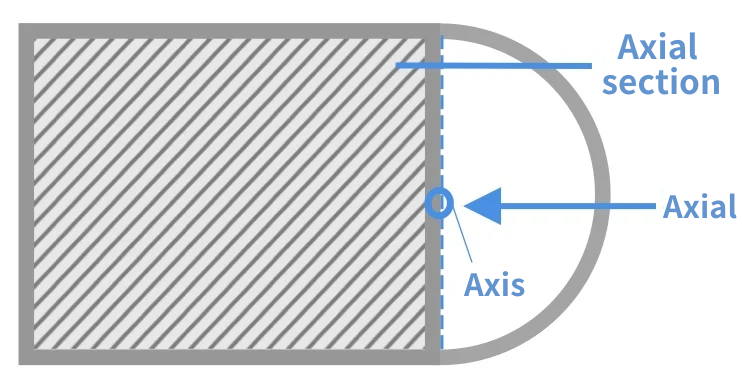บทความนี้เน้นบทบาทสำคัญของการติดตั้งโพรบเครื่องวัดอัตราการไหลแบบอัลตราโซนิกในความแม่นยำของการวัด โดยเปรียบเทียบวิธี Z, V, N และ W พร้อมแสดงคลิปยึดของ LORRIC ที่ช่วยให้การติดตั้งง่ายขึ้น นอกจากนี้ยังครอบคลุมถึงขนาดของท่อ วัสดุ ความเข้มของสัญญาณ และสภาพแวดล้อมที่มีผลต่อการเลือกวิธีการติดตั้ง โดย LORRIC มีแนวทางการติดตั้งที่พิสูจน์แล้วว่ามีประสิทธิภาพ
1. วิธีการติดตั้งโพรบของเครื่องวัดอัตราการไหลแบบอัลตราโซนิก
ขั้นแรก การติดตั้งเครื่องวัดอัตราการไหลแบบอัลตราโซนิกต้องยืนยันว่าโพรบทั้งสองอยู่ตรงข้ามกันที่มุม 180 องศาบนส่วนตามแนวแกน ส่วนตามแนวแกนหมายถึงอะไร? การอธิบายต้องเริ่มจากแนวคิดของแกนกลาง แกนกลางหมายถึงทิศทางของแกนหมุนกลางของทรงกระบอก และส่วนตามแนวแกนคือส่วนที่ผ่านแกนนี้ในแนวยาว

การที่โพรบทั้งสองอยู่ตรงข้ามกันที่มุม 180 องศาบนส่วนตามแนวแกนหมายถึงโพรบทั้งสองอยู่ตรงข้ามกันโดยตรง และต้องยืนยันว่าโพรบทั้งสองวางอยู่ตรงข้ามกัน (ดังแสดงในแผนภาพด้านล่าง)
.png)
ถัดไป ยืนยันระยะทางวัดเส้นทแยงมุมระหว่างโพรบสองตัว (ดังแสดงในแผนภาพด้านล่าง)
